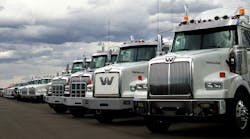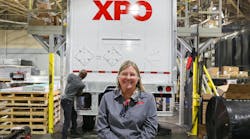Technician Pay Rates will have to begin to really change based on continuing need rather than competitive salary ranges used by HR and budget makers.
- There will have to be a predetermined scale that the techs will move along over a set timeframe, not a lifetime but a maximum of 5 years from entry to max pay.
- It will have to automatically adjust every six months until the maximum salary range is met.
- The increase will have to be scheduled automatically as in bargaining unit agreements, but if the technician does not meet specific goals the increase will be held back until those reasonable performance growth steps are met.
- The normal system annual pay increases of 1.5% to 3% will no longer fly in the eyes of techs.
- Earnings growth excuses for slow or no wage growth deemed unassailable by those who do not truly value the techs of today and the future will no longer work with these new Doctors of Iron.
Parts Will grow past 50% of vehicle costs because we have become servants to the dealers of captive and white box parts that are now coming in decorative boxes with the support of manufacturers capture more parts sales. With more captive parts that by design can only be purchased through the OEM dealer, we will have to increase our troubleshooting abilities and reduce our parts-changer mentality to no longer accept shotgun repairs.
Shutters They will be back. I predict their return to control engine temperature to a much finer degree, not only the engine internal temperatures, but the fridge ambient air blowing by the engine like a wind tunnel. Fuel economy standards will demand and mandate such careful temperature controls. Today considered retro, shutters are already showing up in the automotive industry. We better be ready to maintain this newer level of temperature control sophistication.
Cab Overs I predict the return of the COE, although at a slow pace as we see continued European influence in truck design and as OEM dealers enjoy the benefits of vertical integration. Look at most of all the concept vehicle photos in the magazines and you’ll see subtle hints of OEM future designs. Somehow the COE will begin to repeat history, perhaps with the help of cube, length and weight laws.
GLIDERS There has been a silent underground movement towards fleets supplementing vehicle counts with powered gliders, or remanufactured trucks. Not subject to current emission requirements, remanufactured trucks have a place for those specific vocations where advanced emissions systems are costly to manage and damage uptime and utilization for their severe environments. Watch for this trend to grow in 2015 and beyond. One manufacturer was in early, building many glider chassis in a box. Fleets are buying them, dealers building them, independents managing them. There’s enough interest for others to jump in and build their own trucks in a box that will be fully compliant and legal.
DVIRs Electronic or otherwise, I continue to predict that electronic DVIR’s will clutter and confuse the repair order process and drop vehicle utilization by double digits percentages during a time when keeping and finding technicians has become more challenging. We had a hard time getting any needed repair information before the paper reduction act gave drivers the “No Defect Noted” legal escape route. Now maintenance departments will be forced to look more closely during PM inspections, possibly increasing scheduled inspections or adding outbound service lanes to understaffed maintenance departments with underfunded budgets and small staffs.
DFPs Servicing diesel particulate filters will become more of a planned event based on fleet- and engine-specific average mileages. Those costs will close to a penny a mile average. And look for DPFs to turn up as a trade or sale general requirement within the trade conditions like those we have for no broken glass or no damage over “x” dollars. Approximately $1000 providing the DFP has its full integrity. Big auctions houses will be much simpler to deal with during vehicle disposals.
Budgeting This year look for management requirements that budgets be more detailed and provide tighter cost predictions. Maintenance costs will not be able to fit within management’s desired budget limits given all the emission related costs, and we may have to accept hockey stick CPMs until fleets are staffed and trained to bring the repairs and emission maintenance back in-house. Leasing companies are now struggling with rising costs and guaranteed CPM’s. Fleets are struggling with paying misunderstood, unbudgeted costs arising from drivers’ inability to regen when required. It’s time to accept a higher budget plan for operating costs. They are here to stay.
Summary Although these are not necessarily new issues, they have been ones that we continued to avoid because up to now we have been able to work around them. That may not be the case in 2015, and we may have to change our expectations. There is a cost to green, and we need to figure out the shade we can afford.


